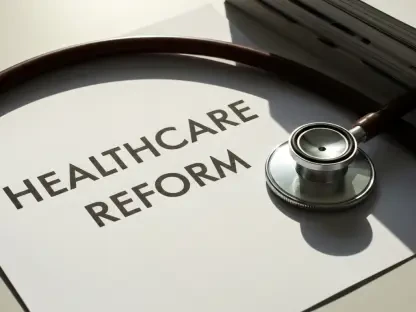In the rapidly evolving realm of healthcare marketing, precision and compliance are paramount, particularly when it comes to Electronic Health Record (EHR) messaging. With the burgeoning importance of data accuracy and integrity, the choice between leveraging first-party or third-party data sources has become a critical consideration. First-party data, being collected directly from healthcare professionals through verified, privacy-compliant interactions, offers a transformative approach to enhancing the effectiveness of EHR marketing. This approach ensures accurate, secure, and contextually relevant communications that align seamlessly with clinical workflows and patient care dynamics.
Advantages of First-Party Data in Healthcare Marketing
Precision and Relevance in EHR Messaging
First-party data provides healthcare marketers with the ability to deliver highly targeted and relevant messages to healthcare professionals. Unlike third-party data, which is often derived from unverified external sources and lacks direct clinical context, first-party data is collected straight from EHR systems or other clinical platforms. This ensures precision in targeting and messaging, enhancing the relevance of communications sent to healthcare providers. By delivering messages tailored to specific conditions or patient needs at critical points in their workflows, first-party data amplifies the impact and efficiency of EHR marketing strategies.
The nuanced insights obtained through first-party data facilitate a more deterministic approach to targeting. This means marketers can engage healthcare professionals with contextually pertinent information, improving engagement rates and outcomes. The reliance on reliable first-party data, integrated with identity-resolution frameworks, enables the mapping of healthcare provider behavior across platforms, providing actionable clinical insights. This allows for the formulation of precise messaging strategies that align with healthcare professionals’ needs and preferences while adhering to strict privacy compliance standards, such as HIPAA in the United States.
Secure Data Handling and Compliance
One of the foremost advantages of utilizing first-party data in EHR marketing is its heightened security and compliance with regulatory standards. Third-party data poses significant risks concerning compliance and privacy, largely due to its lack of verification and traceability. With first-party data, the transparency and traceability of the data collection process are ensured, reducing compliance risks and bolstering trust with healthcare professionals. This is particularly important in a landscape characterized by rigorous regulations such as the GDPR and CCPA, where data breaches and non-compliance can lead to severe penalties.
By utilizing first-party data, marketers can alleviate compliance concerns, fostering trust with practitioners who are becoming increasingly wary of data privacy issues. Additionally, this approach mitigates potential brand safety issues associated with the indiscriminate use of third-party data. First-party data enables marketers to build robust privacy protocols throughout their marketing workflows, ensuring that all messaging activities align with required regulations and fostering a more secure and trustworthy environment for healthcare marketing initiatives.
Limitations and Risks of Third-Party Data
Compliance and Regulatory Challenges
Third-party data in EHR marketing is fraught with numerous challenges, particularly concerning compliance and regulatory adherence. This data is often sourced from unverified and loosely regulated environments, resulting in potential discrepancies and inaccuracies. When used in healthcare marketing, these inadequacies can lead to inefficiencies, inaccuracies in targeting, and significant reputational risks. Given the highly regulated nature of the pharmaceutical industry, any lapses in data compliance could lead to severe repercussions, including fines and damage to brand reputation.
Moreover, third-party data often lacks the necessary verification needed to ensure alignment with stringent privacy regulations, which necessitates data protection and patient privacy. The inability to trace and verify the origins and accuracy of third-party data poses a significant risk in terms of compliance. Consequently, healthcare marketers face challenges in ensuring that their messaging efforts remain compliant with regulatory standards, which can undermine the effectiveness of their marketing strategies and endanger their relationships with healthcare professionals.
Ineffectiveness in Targeting and Messaging
The inherent limitations of third-party data also extend to its ineffectiveness in targeting and messaging. The data, which is often generalized and lacking in contextual relevance, results in blind spots that affect targeting accuracy and engagement. The information obtained from data brokers or web analytics may fail to capture the specific needs and preferences of healthcare providers, leading to suboptimal targeting and messaging outcomes. In an industry where precision and relevance are crucial, the use of third-party data can lead to missed opportunities and reduced return on investment.
The probabilistic nature of third-party data targeting models often fails to provide the determinism required for effective EHR messaging. The lack of direct interaction with healthcare professionals means the data may be outdated or irrelevant, rendering the marketing messages less impactful. This is further compounded by the absence of a clear and transparent data collection process, which hinders the ability to tailor marketing efforts to align with healthcare providers’ actual needs and preferences. As a result, the potential benefits of EHR marketing are diminished, highlighting the need for more reliable data sources like first-party data.
Emerging Trends and Future Considerations
Growth of EHR Marketing and Data Accuracy
The EHR marketing sector has seen significant growth, with the U.S. market projected to increase at a compound annual growth rate throughout the foreseeable future. This expansion underscores the increasing importance of data-driven marketing strategies that prioritize accuracy and reliability. As EHRs become more integral in healthcare settings, the demand for precise and compliant data sources will only heighten, further establishing first-party data as a pivotal asset in healthcare marketing initiatives.
This growth trajectory indicates a shift towards enhancing engagement with healthcare professionals through more contextually relevant messaging strategies. As EHR systems become more sophisticated, the integration of first-party data offers marketers the opportunity to refine their targeting approaches, optimizing the delivery of messages to align with healthcare professionals’ current needs. The evolving landscape of EHR marketing necessitates a strategic emphasis on accurate, secure, and privacy-compliant data practices, creating a clear advantage for first-party data over its third-party counterparts.
Technological Innovations in Data Collection
The advancements in technology have catalyzed the evolution of data collection and analysis in healthcare marketing. The integration of artificial intelligence (AI) and machine learning (ML) technologies has facilitated the real-time analysis of first-party data, enabling more dynamic and contextually appropriate EHR messaging. Technologies such as predictive analytics and natural language processing are being increasingly leveraged to identify patterns and insights within healthcare data, allowing marketers to tailor their messaging strategies to meet emerging trends and demands.
Companies like Doceree are at the forefront of this technological evolution, employing patented Triggers technology to harness first-party data and provide deterministic targeting based on real-time clinical triggers. These innovations are paving the way for more sophisticated and responsive EHR marketing strategies that align with regulatory obligations, ensuring compliance while delivering impactful and engaging messages to healthcare professionals. The incorporation of these technological advancements underscores the growing relevance of first-party data as a key driver of success in the evolving landscape of EHR marketing.
Strategic Implications and Lessons Learned
Leveraging First-Party Data for Future Success
The strategic implications of employing first-party data in EHR marketing cannot be overstated. By prioritizing data accuracy and compliance, marketers can optimize their messaging strategies, maximizing engagement and return on investment. The deterministic nature of first-party data provides a competitive edge, allowing marketers to deliver contextually relevant messages that align with healthcare professionals’ evolving needs and preferences. As regulations become more stringent, the transparency and traceability offered by first-party data will be indispensable in ensuring compliance and building trust in the healthcare industry.
The transition towards first-party data represents a foundational change in healthcare marketing, providing a pathway for more precise and effective messaging approaches. By aligning marketing efforts with data protection and privacy regulations, healthcare marketers can minimize compliance risks while enhancing their engagement with healthcare professionals. This paradigm shift underscores the necessity of embracing first-party data as an essential component of EHR marketing strategies, positioning marketers to capitalize on the projected growth of the EHR market and meet the evolving demands of healthcare professionals and patients alike.
The Path Forward in EHR Marketing
In today’s swiftly changing landscape of healthcare marketing, precision and adherence to regulations are crucial, especially when discussing Electronic Health Record (EHR) messaging. As the significance of data accuracy and integrity surges, the decision to use first-party or third-party data sources has emerged as a vital factor. First-party data, which is obtained directly from healthcare professionals through verified, privacy-compliant channels, presents a transformative approach that can significantly boost the effectiveness of EHR marketing efforts. By ensuring that communications are precise, secure, and aligned with clinical workflows, first-party data enables marketing strategies that are contextually relevant and seamlessly integrated into patient care dynamics. This alignment not only enhances the effectiveness of communications but also builds trust with healthcare providers by respecting their need for data privacy and security. As healthcare marketing continues to evolve, prioritizing first-party data sources can lead to more successful and ethical marketing outcomes.









